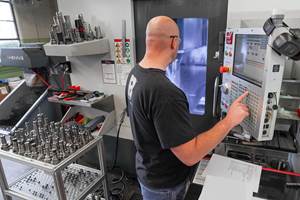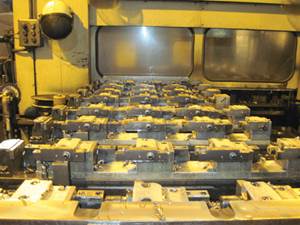Strategic Magnetic Workholding
Switching to a modular form of magnetic workholding enabled this global retread supplier to accommodate a greater number of parts in one setup while accelerating cycle times.
Some shops may be reluctant to trust an “invisible” method of securing parts for machining. Magnetic workholding holds the part without any visible clamps. However, this is its advantage. Compared to mechanical clamps, magnetic workholding grips the part through a larger surface area. As one Muncie, Indiana, machine shop recently discovered, this can lead to unexpected rewards. In addition to simplifying setups, the shop has been able to enhance accuracy and increase cycle times by 30 percent.
At its facility, the Kendon Corporation makes retread molds for truck tires. The 32-person facility offers retread molds for at least 275 different combinations of tire size and tread design. Each mold is 34 feet long, imparting the tread design into a sheet of rubber that is good for multiple tires. Because the details of any mold are repetitive—that is, the tread design is repeated over and over again—the mold can be built out of identical pieces. A sliver of tread pattern just a few inches wide is reproduced in cast iron in the facility’s in-house foundry. Mating and holding surfaces of these cast slivers are then milled flat in the machine shop, after which each 34-foot mold is assembled out of nearly 100 of these identical cast and machined pieces. (See image below.)
Retreading refers to bonding new tread onto old tires. It makes good economic and environmental sense, as it prevents tires from entering the landfill and costs a fraction of the expense of producing a new tire. This option also conserves resources, as 22 gallons of oil are required to manufacture one new truck tire, whereas 7 gallons are needed to produce a retread.
Kendon’s former workholding method translated to labor-intensive setups. After leaving the foundry, castings go to the vertical machining centers for milling, drilling, tapping and chamfering operations. This is the point at which they enter senior programmer Shane Elam’s realm.
With mechanical clamping, the machine’s table restrictions dictated that only one or two parts could be machined at a time, he says, which created a bottleneck. Also, each part run necessitated a 3-hour setup. This resulted from having to mill a separate clamping plate for each run in order to ensure the flatness of the setup. Working from a piece of scrap, Mr. Elam would cut the steel material close to the length of the part for each new run and add holes for securing the toe clamps that would hold the workpieces.
Despite this lengthy process, each plate was discarded once the part run was completed—a level of wastefulness that may seem antithetical to a business concerned with conserving tire material.
These time-consuming setups and wasted resources were indications that Kendon needed to revisit its clamping options. Acknowledging the shop’s current method needed improvement, Mr. Elam consulted Dan Opie, Kendon’s plant manager. Early on, the two dismissed the option of a conventional magnetic workholding unit that would cover much of the table. Through-hole machining would damage it, and a unit large enough to accommodate more than one or two pieces per setup would be expensive.
However, an advertisement for Alpha Workholding Solutions of Hartland, Wisconsin alerted Mr. Elam to an alternative magnetic workholding option—small “A-pod” modules delivering workholding through easily moveable units. Mr. Elam then approached management with the idea to integrate magnetic clamping into the shop’s daily operations.
“A lot was at stake because I had to convince the higher-ups that we could recoup the initial investment in 18 months,” he explains.
This initiative on Mr. Elam’s part prompted Mr. Opie to contact Brad Evans, national sales manager at Alpha Workholding Solutions, to further explore the modular system.
Fueling Creativity
The modular A-pod solution that Kendon ultimately chose consists of self-contained permanent electromagnets exerting 1,400 pounds of clamping force each. Measuring 3.66 inches in diameter and 2.68 inches high, each module functions independently and can therefore be strategically located along the part to allow for through-hole or profile work. The modules vaguely resemble tall hockey pucks (at least in appearance). By means of a through-bolt, they are mounted onto T-slots and slide into place.
The pods incorporate permanent magnets that are activated after a surge of electricity is delivered via a remote controller. The cable is then disconnected once loading is completed, and the part is held until it is deactivated by another stream of electricity. No power is required to maintain the clamping, so power outages are of nominal concern.
Each pole is magnetically balanced, containing equal amounts of north and south flux to eradicate stray flux. This means that chips do not stick to the part, Mr. Evans says. In addition, the magnetic energy created emanates just 0.400 inch into mild steel to further minimize the negative effects of stray magnetism.
Don’t Tread On Magnetic Workholding
After Mr. Evans conducted trial runs at Kendon, the company purchased 24 A-pod modules. Implementation began on the company’s two Mazak VMCs.
“Ultimately, the A-pods were chosen because of the versatility they afforded us,” says Mr. Elam. “For different part sizes or different numbers of pieces per setup, the modules are simply moved to different locations on the table.”
The units are routinely configured in two rows of four, accommodating four workpieces with two units apiece. This configuration can vary, however. For longer pieces, another option is three pieces per setup held by three units apiece.
As a result of the implementation, Mr. Elam has been granted a reprieve from time-consuming, cumbersome setups. Because the A-pod units ensure the required flatness, milling a plate for each part run is a thing of the past. Based on this, and based on the cycle time improvement, the shop theorizes that it is saving a total of 4 hours per part run.
The cycle time improvement probably results from less vibration, Mr. Elam says. The magnetic workholding holds the parts more securely. He has been able to increase speeds and feeds, and tool life has improved as well.
Originally, Mr. Elam projected the ROI to be around 18 months. In actuality, Kendon was able to recover its initial investment in 13 months.
Related Content
Parts and Programs: Setup for Success
Tips for program and work setups that can simplify adjustments and troubleshooting.
Read MoreMedical Shop Performs Lights-Out Production in Five-Axes
Moving to five-axis machining enabled this shop to dramatically reduce setup time and increase lights-out capacity, but success relied on the right combination of workholding and automation.
Read MoreMoving To Magnets Doubles Productivity
Moving from hydraulic to magnetic fixtures enabled this shop to reduce setup time, improve rigidity and eliminate manual operations. As a result, productivity doubled.
Read MoreCustom Workholding Principles to Live By
Workholding solutions can take on infinite forms and all would be correct to some degree. Follow these tips to help optimize custom workholding solutions.
Read MoreRead Next
Magnetic Holding Pattern
In finding a way to allow magnetic milling chucks to hold parts that typically aren’t secured by the "invisible" workholding method, this shop happened upon a means to repeatedly position parts in any of its machine tools.
Read MoreThe Cut Scene: The Finer Details of Large-Format Machining
Small details and features can have an outsized impact on large parts, such as Barbco’s collapsible utility drill head.
Read More
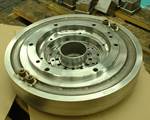



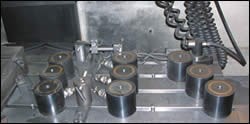
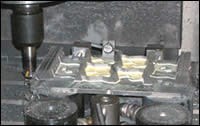



















.png;maxWidth=300;quality=90)

